
The Mystical Myvatn Region: Iceland's Natural Wonderland
Discover the Myvatn Region: Iceland's Geothermal Wonderland with its Breathtaking Landscapes, Soothing Nature Baths, and Abundant Birdlife.
The Myvatn Region in Iceland is a paradise for nature lovers and adventure seekers. This area is known for its striking landscapes, geothermal activity, and abundant birdlife. The name 'Myvatn' translates to 'Midge Lake,' hinting at the swarms of tiny flies that frequent the area, especially during summer. However, don't let that deter you; the natural beauty and unique attractions far outweigh this minor inconvenience. One of the most captivating features of the Myvatn Region is the Myvatn Nature Baths. Often referred to as the 'Blue Lagoon of the North,' these geothermal baths offer a relaxing soak with stunning views of the surrounding lava fields and mountains. The mineral-rich waters are said to have healing properties, making it a perfect spot to unwind after a day of exploring. Nearby, you'll find the Hverfjall volcano, a colossal tephra crater that offers panoramic views of the region from its summit. The hike to the top is relatively easy and well worth the effort. Another must-see is the Dimmuborgir lava fields, also known as the 'Dark Castles.' This area is filled with strange lava formations and caves, creating an otherworldly landscape that has inspired many Icelandic legends. Birdwatchers will be delighted by the variety of species that call the Myvatn Region home. The lake and surrounding wetlands are especially known for their population of waterfowl, including rare species like the Barrow's Goldeneye. Don't forget to bring your binoculars and a good camera to capture these beautiful creatures in their natural habitat. As you explore, you'll come across Skútustaðagígar, a series of pseudocraters formed by steam explosions. These craters are located on the southern shore of Lake Myvatn and provide another unique geological feature to marvel at. Whether you're hiking, birdwatching, or simply soaking in a hot spring, the Myvatn Region offers a diverse range of activities that cater to all types of travelers.
Local tips in Myvatn Region
- Visit during late spring or early autumn to avoid the peak midge season and still enjoy pleasant weather.
- Bring a swimsuit and towel for a relaxing dip in the Myvatn Nature Baths.
- Hiking shoes are a must for exploring the volcanic craters and lava fields.
- Carry binoculars and a good camera for birdwatching and capturing the stunning landscapes.
- Check local weather conditions before hiking to ensure safety, as weather can change rapidly in Iceland.
The Mystical Myvatn Region: Iceland's Natural Wonderland
The Myvatn Region in Iceland is a paradise for nature lovers and adventure seekers. This area is known for its striking landscapes, geothermal activity, and abundant birdlife. The name 'Myvatn' translates to 'Midge Lake,' hinting at the swarms of tiny flies that frequent the area, especially during summer. However, don't let that deter you; the natural beauty and unique attractions far outweigh this minor inconvenience. One of the most captivating features of the Myvatn Region is the Myvatn Nature Baths. Often referred to as the 'Blue Lagoon of the North,' these geothermal baths offer a relaxing soak with stunning views of the surrounding lava fields and mountains. The mineral-rich waters are said to have healing properties, making it a perfect spot to unwind after a day of exploring. Nearby, you'll find the Hverfjall volcano, a colossal tephra crater that offers panoramic views of the region from its summit. The hike to the top is relatively easy and well worth the effort. Another must-see is the Dimmuborgir lava fields, also known as the 'Dark Castles.' This area is filled with strange lava formations and caves, creating an otherworldly landscape that has inspired many Icelandic legends. Birdwatchers will be delighted by the variety of species that call the Myvatn Region home. The lake and surrounding wetlands are especially known for their population of waterfowl, including rare species like the Barrow's Goldeneye. Don't forget to bring your binoculars and a good camera to capture these beautiful creatures in their natural habitat. As you explore, you'll come across Skútustaðagígar, a series of pseudocraters formed by steam explosions. These craters are located on the southern shore of Lake Myvatn and provide another unique geological feature to marvel at. Whether you're hiking, birdwatching, or simply soaking in a hot spring, the Myvatn Region offers a diverse range of activities that cater to all types of travelers.
When is the best time to go to Myvatn Region?
Iconic landmarks you can’t miss
Hverir
Explore the stunning geothermal features of Hverir, a must-visit attraction in Iceland showcasing bubbling mud pots and vibrant mineral deposits.

Mývatn Nature Baths
Experience the rejuvenating thermal waters of Mývatn Nature Baths, surrounded by Iceland's breathtaking landscapes and rich biodiversity.

Grjótagjá
Explore the mystical Grjótagjá cave in Iceland, where geothermal springs meet breathtaking landscapes for an unforgettable experience.
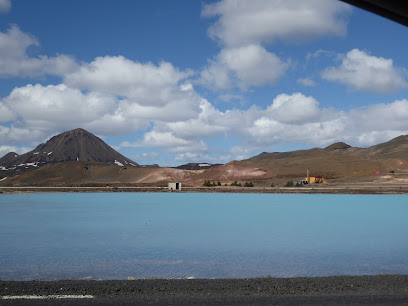
Vogafjós Farm Resort
Discover the charm of Vogafjós Farm Resort, where Icelandic cuisine meets breathtaking views of Lake Mývatn in the heart of nature.

Námafjall Hverir Viewpoint
Experience the geothermal marvels at Námfjall Hverir Viewpoint, a must-visit destination in Iceland showcasing bubbling mud pots and steaming fumaroles.

Skútustaðagígar
Explore Skútustaðagígar, Iceland's stunning pseudocraters surrounded by breathtaking landscapes and rich wildlife, a must-see for nature lovers.

Fosshotel Mývatn
Experience the beauty of Iceland from Fosshotel Mývatn, your base for adventure near breathtaking landscapes and iconic attractions.

Lava field Dimmuborgir
Discover Dimmuborgir: A mesmerizing lava field in Iceland, rich in folklore and stunning natural formations, perfect for hiking and exploration.
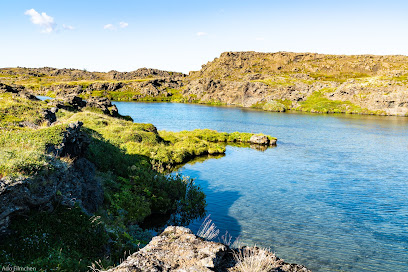
Mývatn
Explore Mývatn, Iceland's breathtaking lake known for its stunning landscapes, rich wildlife, and unique geothermal features.

Hofdi
Explore the serene beauty of Hofdi, a nature preserve in Skútustaðir, Iceland, offering lush landscapes and diverse wildlife for an unforgettable experience.
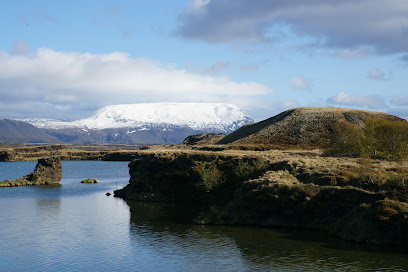
Lake Mývatn panoramic point
Discover stunning vistas and rich wildlife at Lake Mývatn Panoramic Point, a natural wonder in the heart of Iceland's breathtaking landscapes.

Stóragjá
Discover the serene beauty of Stóragjá, a magical geothermal oasis in Iceland, perfect for exploration and relaxation amidst stunning landscapes.

Dimmuborgir Guesthouse
Experience the mystical beauty of Dimmuborgir at Dimmuborgir Guesthouse, your perfect Icelandic retreat amidst breathtaking landscapes.

Hlíð ferðaþjónusta
Experience the tranquility of nature at Hlíð ferðaþjónusta Campground, a perfect base for exploring the stunning Myvatn region of Iceland.
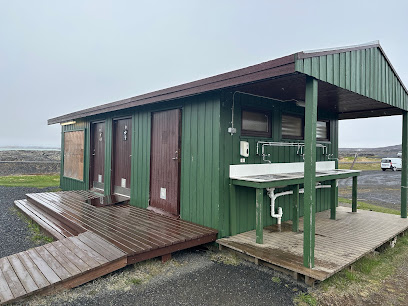
Myvatn Geothermal Area
Explore the mesmerizing Myvatn Geothermal Area, a unique Icelandic attraction with bubbling hot springs and stunning volcanic landscapes.

Unmissable attractions to see
Forest Lagoon
Discover the enchanting Forest Lagoon in Akureyri, a thermal bath experience surrounded by Iceland's breathtaking landscapes.
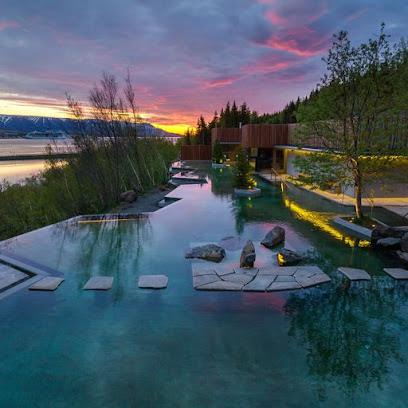
Grenjaðarstaður - the Old Turfhouse
Explore Grenjaðarstaður, an iconic turf house museum in Húsavík, showcasing Icelandic history and traditional architecture amidst stunning landscapes.

Skútustadagrig pseudo craters
Explore the stunning pseudo craters of Skútustaðagígar, a unique geological wonder near Lake Mývatn, offering breathtaking views and rich birdlife.

Sulfuric smoker
Discover the Sulfuric Smoker in Reykjahlíð, a mesmerizing geothermal attraction showcasing Iceland's natural wonders and breathtaking landscapes.

Selfoss
Experience the breathtaking views and serenity of Selfoss Waterfall, a hidden gem in Iceland's stunning landscapes, perfect for nature lovers and photographers.

The Fly Lands
Explore The Fly Lands, a stunning Icelandic tourist attraction near Lake Mývatn, famous for its breathtaking landscapes and rich birdlife.

Lake Mývatn View Point
Discover the stunning natural beauty and diverse wildlife at Lake Mývatn View Point, a must-visit destination in Iceland's breathtaking landscapes.

Danau Myvatn
Experience the breathtaking landscapes and unique geothermal wonders of Danau Myvatn, Iceland's magical lake destination for nature lovers.

Skútustaðir
Explore the stunning geological formations and rich birdlife of Skútustaðir, a captivating natural wonder in Iceland's Mývatn region.

Essential places to dine
Vogafjós Farm Resort
Experience authentic Icelandic hospitality at Vogafjós Farm Resort with fresh farm-to-table cuisine near beautiful Lake Mývatn.
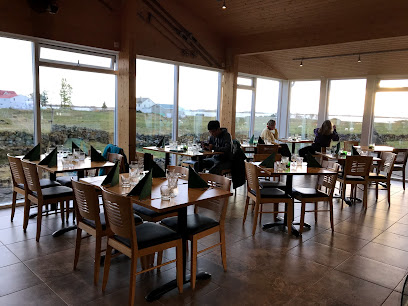
Daddi's Pizza
Experience the best pizza in Mývatn at Daddi's Pizza—where quality ingredients meet Icelandic hospitality.
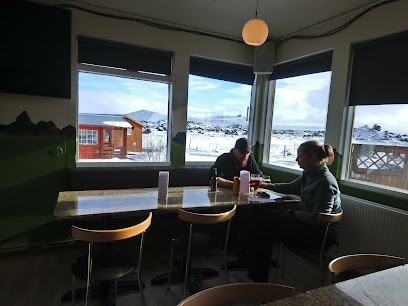
Fish and Chips Lake Mývatn
Experience the authentic taste of Iceland at Fish and Chips Lake Mývatn – where fresh ingredients meet breathtaking views.

Kaffi Borgir
Discover delicious homemade meals and unique souvenirs at Kaffi Borgir, set against the stunning backdrop of Dimmuborgir's lava formations.

Gamli Bærinn
Experience authentic Icelandic cuisine at Gamli Bærinn in Reykjahlíð – savor traditional dishes like lamb soup amidst stunning landscapes.

Bistro Sel & Pizza
Discover Bistro Sel & Pizza in Mývatn - where delicious flavors meet stunning landscapes.

Mylla Restaurant
Discover authentic Icelandic flavors at Mylla Restaurant in stunning Myvatn—where local ingredients meet breathtaking views.

Eldey Restaurant
Experience authentic Icelandic cuisine at Eldey Restaurant in Mývatn, where local flavors meet breathtaking landscapes for an unforgettable dining adventure.

Kvika Kaffi
Experience authentic Icelandic flavors at Kvika Kaffi in Reykjahlíð, where comfort meets tradition in every bite.

Markets, malls and hidden boutiques
Krambúðin Reykjahlíð
Explore the best of local flavors and essentials at Krambúðin Reykjahlíð, your go-to grocery store in the heart of Iceland.

Kaffi Sel and Mývatn öl brewery
Experience the flavors of Iceland at Kaffi Sel and Mývatn Öl Brewery, where local brews and homemade delights meet stunning natural beauty.

Handicrafts Market
Explore the Handicrafts Market in Reykjahlíð for authentic Icelandic sweaters and unique artisanal crafts, perfect for memorable souvenirs.

Essential bars & hidden hideouts
Mývatn Nature Baths
Discover the tranquility of Mývatn Nature Baths, where geothermal waters and stunning landscapes offer the ultimate relaxation experience in Iceland.

Vogafjós Farm Resort
Experience authentic Icelandic cuisine at Vogafjós Farm Resort, where farm-fresh ingredients meet stunning landscapes in Myvatn.

Daddi's Pizza
Experience the best pizza in Mývatn at Daddi's Pizza, where flavors meet Icelandic charm in a cozy atmosphere.

Fosshotel Mývatn
Discover the stunning natural beauty and warm hospitality at Fosshotel Mývatn, your ultimate Icelandic escape surrounded by breathtaking landscapes.

Laxá Hótel
Experience the natural beauty and tranquility of Mývatn at Laxá Hótel, where comfort meets adventure in Iceland's stunning landscapes.

Mývatn - Berjaya Iceland Hotels
Experience the best of Iceland at Mývatn - Berjaya Iceland Hotels, your gateway to stunning landscapes and unforgettable adventures.

Fish and Chips Lake Mývatn
Experience delectable fish and chips by the scenic Lake Mývatn, where fresh ingredients meet the stunning beauty of Iceland.

Kaffi Borgir
Experience the charm of Kaffi Borgir, a delightful restaurant and café in Dimmuborgir, Mývatn, offering local cuisine and stunning views.

Gamli Bærinn
Discover the flavors of Iceland at Gamli Bærinn, where traditional cuisine meets a cozy atmosphere in Reykjahlíð.

Jaja Ding Dong Húsavík
Discover the vibrant spirit of Iceland at Jaja Ding Dong Húsavík, where music and culture unite in a lively bar and event venue.
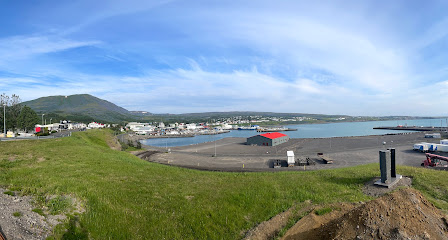
R5 Micro Bar
Discover the charm of R5 Micro Bar in Akureyri, where local brews meet vibrant nightlife in a cozy, welcoming atmosphere.

Bistro Sel & Pizza
Experience the heart of Mývatn with delightful dishes at Bistro Sel & Pizza, where local flavors meet cozy ambiance for every traveler.

Mylla Restaurant
Experience the best of Icelandic cuisine at Mylla Restaurant, where local ingredients meet breathtaking views in the heart of Myvatn.

Eldey Restaurant
Experience the authentic taste of Icelandic cuisine at Eldey Restaurant in the breathtaking Mývatn region, where local flavors meet stunning landscapes.

Götubarinn
Experience the vibrant nightlife of Akureyri at Götubarinn, where great drinks and a lively atmosphere await every visitor.

Local Phrases about Myvatn Region
-
- HelloHalló
[HAH-loh] - GoodbyeBless
[BLESS] - YesJá
[YOW] - NoNei
[NAY] - Please/You're welcomeGjörðu svo vel
[GYUR-thu svoh vel] - Thank youTakk fyrir
[TAKK feer-ir] - Excuse me/SorryAfkvæmið
[AHF-kvye-meeth] - How are you?Hvernig hefur þú það?
[KVER-nig HEH-ur thoo thahd] - Fine. And you?Fínt. En þú?
[FEENT. Ehn thoo] - Do you speak English?Talar þú ensku?
[TAH-lar thoo EHN-skoo] - I don't understandÉg skil ekki
[YEG skil EHK-ki]
- HelloHalló
-
- I'd like to see the menu, pleaseÉg myndi vilja sjá matsedilinn, takk
[YEG MUN-dee VIL-ya syah MAT-seh-dil-inn, tahk] - I don't eat meatÉg borða ekki kjöt
[YEG BOR-tha EHK-ki chyut] - Cheers!Skál!
[SKOWL] - I would like to pay, pleaseÉg myndi vilja greiða, takk
[YEG MUN-dee VIL-ya gray-tha, tahk]
- I'd like to see the menu, pleaseÉg myndi vilja sjá matsedilinn, takk
-
- Help!Hjálp!
[HYOWLP] - Go away!Farðu í burtu!
[FAHR-thu ee BUHR-too] - Call the Police!Hringðu í lögregluna!
[HRING-thu ee LER-eg-loo-na] - Call a doctor!Hringðu í lækninn!
[HRING-thu ee LAYK-nin] - I'm lostÉg er týndur
[YEG AIR TEEN-thur] - I'm illÉg er veikur
[YEG AIR VAKE-ur]
- Help!Hjálp!
-
- I'd like to buy...Ég myndi vilja kaupa...
[YEG MUN-dee VIL-ya KOW-pa] - I'm just lookingÉg er bara að skoða
[YEG AIR BAH-rah ath SKO-tha] - How much is it?Hvað kostar það?
[Kvath KOS-tar thahd] - That's too expensiveÞað er of dýrt
[Thath air ov DEERT] - Can you lower the price?Getur þú lækkað verðið?
[GEH-tur thoo LAI-kath VER-thith]
- I'd like to buy...Ég myndi vilja kaupa...
-
- What time is it?Hvað er klukkan?
[Kvath air KLOO-khan] - It's one o'clockKlukkan er eitt
[KLOO-khan air ayth] - Half past (10)Hálftíu
[HOWLFT-yoo] - MorningMorgun
[MOR-gun] - AfternoonSíðdegi
[SEETH-deh-ye] - EveningKvöld
[KVUHLTH] - YesterdayÍ gær
[EE gire] - TodayÍ dag
[EE dahg] - TomorrowÁ morgun
[OW MOR-gun] - 1Eitt
[ayth] - 2Tvö
[tvoe] - 3Þrjú
[thryoo] - 4Fjögur
[fyuh-gur] - 5Fimm
[fim] - 6Sex
[sehx] - 7Sjö
[syuh] - 8Átta
[owt-ta] - 9Níu
[nee-oo] - 10Tíu
[tee-oo]
- What time is it?Hvað er klukkan?
-
- Where's a/the...?Hvar er...
[Kvahr air] - What's the address?Hvað er heimilisfangið?
[Kvath air HAY-me-lee-sfang-ith] - Can you show me (on the map)?Getur þú sýnt mér (á kortinu)?
[GEH-tur thoo seent mehr (ow KORT-inn-oo)] - When's the next (bus)?Hvenær kemur næsti (strætisvagn)?
[KVER-ni-air KEH-mur NAI-sti (STRAI-tis-vahg-n)] - A ticket (to ....)Einn miða (til ...)
[ayth MI-tha (til ...)]
- Where's a/the...?Hvar er...
History of Myvatn Region
-
Lake Myvatn, one of the largest lakes in Iceland, was formed around 2,300 years ago by a massive volcanic eruption. The region's unique landscape with its many pseudocraters, lava pillars, and geothermal springs is a direct result of this volcanic activity. The name Myvatn itself translates to 'Midge Lake,' a reference to the swarms of midges that inhabit the area during summer months.
-
The Myvatn region has been inhabited since the early settlement of Iceland in the 9th century. The rich fishing grounds of Lake Myvatn and the fertile land surrounding it made the region an attractive location for the Norse settlers. The area is dotted with archaeological sites that provide insights into the lives of these early inhabitants.
-
During the medieval period, the Myvatn region played a significant role in the Icelandic Sagas, the epic tales of Iceland's early history. Several sagas, including the Laxdæla Saga and the Saga of the People of Reykjadalur, mention events and characters associated with the Myvatn area, illustrating its importance in Icelandic medieval history.
-
In the 16th century, the Reformation swept through Iceland, leading to significant religious conflicts. The Myvatn region was not immune to these upheavals. The Hólar bishopric, located in the northern part of Iceland, played a crucial role in the religious transformations, influencing the Myvatn area profoundly.
-
Between 1724 and 1729, a series of volcanic eruptions, known as the Myvatn Fires, dramatically altered the landscape of the region. These eruptions created the lava fields of Krafla and the Hverfjall crater, both of which are significant geological features today. The eruptions caused widespread destruction but also contributed to the region's unique geological character.
-
In the 20th century, the construction of the Laxá Power Station on the Laxá River, which flows from Lake Myvatn, sparked significant controversy. Environmentalists and local residents feared the impact on the region's delicate ecosystem. The controversy highlighted the tension between development and environmental preservation, a recurring theme in Iceland's history.
-
Today, the Myvatn region is a popular destination for tourists seeking to experience its unique natural beauty and rich history. Efforts to balance tourism with conservation are ongoing, as the region's ecosystem remains fragile. The establishment of the Myvatn Nature Baths and the promotion of sustainable tourism practices illustrate the region's commitment to preserving its natural and cultural heritage.
Myvatn Region Essentials
-
The Myvatn Region is located in the northeast of Iceland. The nearest international airport is Akureyri Airport, approximately 100 kilometers away. From Akureyri, you can rent a car or take a bus to Myvatn. The drive typically takes around 1.5 hours via the Ring Road (Route 1). Alternatively, you can fly into Keflavik International Airport near Reykjavik and either drive the 480 kilometers to Myvatn or take an internal flight to Akureyri.
-
While in the Myvatn Region, renting a car is highly recommended to explore the area's attractions at your own pace. Public buses are available but infrequent. Local tour operators offer guided tours to popular sites. Biking is also a viable option during summer months, given the region's scenic landscapes and relatively flat terrain.
-
The official currency in Iceland is the Icelandic Krona (ISK). Credit cards are widely accepted in hotels, restaurants, and shops throughout the Myvatn Region. ATMs are available in larger towns like Reykjahlid, so it is advisable to carry some cash for smaller establishments and rural areas.
-
The Myvatn Region is generally very safe for tourists. However, always take standard precautions such as not leaving valuables in plain sight in your car and being cautious when hiking or exploring remote areas. There are no specific high-crime areas targeting tourists, but it is always best to stay vigilant and aware of your surroundings.
-
In case of emergency, dial 112 for immediate assistance. The nearest medical facilities are in Reykjahlid and Akureyri. It is recommended to have travel insurance that covers medical emergencies. For minor health issues, there are pharmacies in Reykjahlid where you can purchase over-the-counter medications.
-
Fashion: Do dress in layers, as weather can change rapidly. Don't forget waterproof clothing and sturdy shoes for outdoor activities. Religion: Do respect local customs and traditions, especially when visiting churches or religious sites. Public Transport: Do be respectful and keep noise to a minimum. Don't eat or drink on public transport. Greetings: Do greet people with a smile or a simple nod. Icelanders are generally informal. Eating & Drinking: Do try local delicacies like geothermal bread and Arctic char. Don’t refuse hospitality, as it is considered impolite.
-
To experience the Myvatn Region like a local, visit the geothermal baths at Myvatn Nature Baths, often referred to as the Blue Lagoon of the North. Engage with locals, who are usually friendly and willing to share stories about the area's history and culture. Don't miss the local delicacies, and consider visiting during the off-season for a more serene experience. Bird watching and exploring lava fields are also highly recommended activities.
Nearby Cities to Myvatn Region
-
Things To Do in Husavik
-
Things To Do in Dalvik
-
Things To Do in Saudarkrokur
-
Things To Do in Egilsstadir
-
Things To Do in Seydisfjordur
-
Things To Do in Blonduos
-
Things To Do in Borgarnes
-
Things To Do in Vik
-
Things To Do in Selfoss
-
Things To Do in Hveragerdi
-
Things To Do in Stykkisholmur
-
Things To Do in Reykjavik
-
Things To Do in Isafjordur
-
Things To Do in Kopavogur
-
Things To Do in Hafnarfjordur












